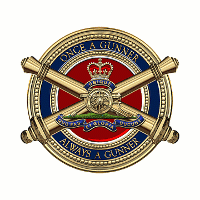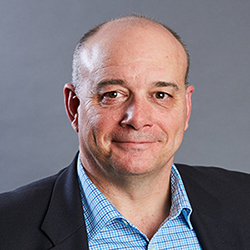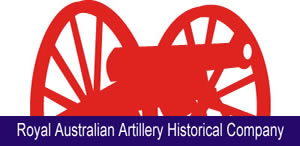Charles Bruce Wellman (Bruce) Tye died tragically as the result of striking his head during a fall from a high loft in his barn last Thursday 3 July 2008. Though his military service was brief, he never forgot his time at the Royal Military College, Duntroon and in the Royal Australian Artillery before he resigned to follow a very successful accountancy career. He was in the early twilight years of retirement at 70 years young when he was taken from us.
Bruce could easily be described as a loveable rogue, a bloke who loved life, always had a mischievous twinkle in his eye and a smile on his face that seemed to say, 'I know there's got to be a humorous side to all this.' He joined the Army as a staff cadet at Duntroon straight from school and (some say 'surprisingly') graduated in 1958, his love of life and constantly seeking mischief eventually led to an early resignation from the service. Bearing in mind his love of horses - riding, breeding and racing - one could perhaps toy with the idea that he could have enjoyed a very successful career in the British Royal Horse Artillery where the life of officers is far less serious, particularly when compared with that in Australia in the late 1950s and early 1960s.
Born at Harbord, Sydney on 27 July 1937 and educated at Sydney Grammar School, his entrance into RMC Duntroon in 1955 was a great adventure. The four years at the College forever saw him in trouble, usually for either his nonchalant approach or his mischievous ways. His belief that rules were for guidance rather than strict compliance led to his spending time in front of his superiors, perhaps more than most of his fellows. A classmate, John Bullen reckons that Bruce was very lucky to graduate and one of many stories behind this was most recently brought forward by His Excellency, the Governor General at the funeral of General Sir Francis Hassett in Canberra and then 'mentioned in despatches' in the Canberra Times soon afterwards. John recounts:
The class was paired off and sent on a night navigation exercise in the bush country adjoining the Majura Firing Range outside Canberra. Bruce found himself with Mike Jeffery (now our Governor General) and it was not long before the pair were geographically embarrassed. (Soldiers get lost, officers are only geographically embarrassed.) The safety drill in these circumstances was to walk on a particular bearing which would eventually intersect the road home where one then waited to be collected by a military vehicle. Tye and Jeffery achieved this, but it was dark, raining and miserable so they hailed the first passing car, gained a lift into the Civic Centre of town and had a relaxing few hours before deciding to head off back to Duntroon.
The walk in the rain out to RMC was not enjoyable and the pair agreed that Mike Jeffery would stand in the middle of the road and flag down the next car and Bruce Tye would quickly open the door and plead a lift. All went according to plan and when the door opened, the driver was seen to be the Deputy Commandant cum Director of Military Art cum commanding officer of the Corps of Staff Cadets, Colonel Frank Hassett. 'Get in Tye,' he ordered whilst Mike climbed speedily into the back. A deathly silence accompanied the short drive into the College where the colonel stopped his vehicle and ordered 'Get out Tye'. Staff Cadet Jeffery did not need to be so invited. The car drove off and the pair scampered off to their barracks and warm beds.
Unknown to these two cadets, however, their fire-eating navigation instructor, Captain Russell 'Adolf' or 'der Fuehrer' Lloyd was combing the bush all night in the rain with his warrant officers looking for the two missing cadets. The next day was not expected to be a good day for Tye and Jeffery, but nothing happened. Trepidation built up as a second, third, fourth day and eventually a week went past without even an official mention of this incident. By this time, Bruce fully expected that his discharge paperwork was being processed and that his very short military career was about to end. Deep consternation turned to glee as he graduated on 9 December 1958.
It was not until about 20 years ago when the Class of 58 lunched Sir Francis and his wife that the question was posed, 'Why were there never any repercussions?' Sir Francis replied that he had been unable to think of any punishment equal to having Tye continually worrying about what could be about to happen to him.' This story was used during Sir Francis' military eulogy to illustrate that not only did Frank Hassett care for his charges, but also had a practical and sympathetic side to his nature.
After graduation into the Royal Australian Artillery (RAA) and the blessed relief of leave, there was the mandatory three-month Young Officers' Course at the School of Artillery at Manly in Sydney from late January 1959. This included such other Gunner notables as Alex Karas, David Gilroy and Mick Crawford. This, of course was right next door to Bruce's childhood stamping grounds of Harbord and led to as much time outside barracks as within for Lieutenant Tye. A fellow classmate on the course, Mick Crawford confirmed that they all somehow did qualify and then were scattered to the four winds as platoon commanders in the 1950s' National Service training units around Australia. Bruce found himself in Perth with the 17th National Service Training Company and was just starting to enjoy the western seaboard when the National Service scheme was abolished. He came back to earth with the thud of being posted to 1st Field Regiment RAA at Holsworthy just west of Sydney under the command of a very stern Lieutenant Colonel Ken 'Hesh' Fullford.
The cessation of National Service led to an expansion of the Regular Army and Lieutenant Tye found himself with the rest of 105th Field Battery driving north at the end of June 1960 to become the first fully established gun battery of the new 4th Field Regiment RAA at Wacol on the western outskirts of Brisbane. Duntroon classmate Mick Crawford was the Regimental Survey Officer there and just knew that Bruce would present a fresh challenge to their fiery commanding officer, Lieutenant Colonel John 'Happy Jack' Studdert, second in command Major Frank McAskill and adjutant Captain Pat Gowans. One could say that Bruce became the subalterns' best friend because of the frequency with which he was 'rostered' for duty officer, an indication of the nonchalant and fun loving manner in which Lieutenant Tye approached his military duties.
The remainder of this embryo unit - Headquarters and 103rd Field Battery - built up quickly and by the end of 1960, the commanding officer determined that he would test his new regiment with an ambitious, lengthy exercise from Brisbane to Mount Spec and the Paluma Dam near Tully in North Queensland, then back via Charters Towers and the inland country route to Brisbane. The exercise, tongue-in-cheek named 'Tropic Holiday', was conducted throughout April and May 1961 and included long road convoy drills, live firing the 25-Pounder guns between Townsville and Charters Towers, parades through towns, ANZAC Day in Townsville, and the delights of the jungle environment of the Mount Spec area. En route, Bruce maintained his balance between work and play with occasional sojourns outside military confines - both with and without official permission.
Soon after returning to Brisbane, Bruce with his battery captain, Bill Hoffman led a truck road party down to Moorebank, Sydney to draw 4.2-inch mortars with which 105th Battery were to be dual-equipped for light scale air deployment training. En route Bruce enjoyed a private escapade with an army vehicle which resulted in a quick train trip back to Brisbane. Soon afterwards, Pat Gowans tells of Bruce having 'morning tea' with the General Officer Commanding Northern Command (ie Queensland) and Lieutenant Tye's decision to change careers.
Bruce went to work at the Australian Taxation Office in Brisbane, studied accountancy at university, went into practice as a taxation accountant specialist and ended up in a very successful accounting partnership. He sold out about three years ago, did some part time work for the firm, then fully retired about 2006. He married Gill (Gillian, pronounced 'Jillian') whom he met whilst at Duntroon and though they did not have any offspring, they were very close with their siblings on both sides of the family. Bruce loved horses - breeding, riding and racing. He also became a very active community member out in the Brookfield area on the western outskirts of Brisbane. He remained equestrian oriented and was very active in the Brookfield Show and conducting moonlight rides. His accounting abilities qualified him well as the assistant treasurer of the Kenmore-Moggill RSL Sub-Branch where he was a very active member. Bruce's other love was bowls. He and old army mates including Bill Reynolds, Don Quinn, Tony Williams and Ken Mackenzie spent many happy hours on and around the rinks of the St Lucia Bowls Club. Bruce had just completed his final qualifying lesson as a bowls umpire when he was tragically struck down.
Bruce had fairly recently become an ardent member of the Australian Bush Poets' Society. When he was in hospital some years ago for a long stay, he took to learning many of Banjo Paterson's poems, including The Man From Snowy River and The Geebung Polo Club. Several of his Duntroon classmates attended a presentation he gave at a Society meeting last year, the first one he had done there. To the delight of all, Bruce won the 'novice' competition and subsequently got elevated to compete with the big boys in the Society. Several weeks ago, Brian ‘Spruiker’ Lindsay, a Duntroon classmate and former Queensland State MP, took a group of classmates including Bruce to lunch at Parliament House in Brisbane. In that grand dining room they were the only diners so they had all the staff to themselves and revelled in the historic atmosphere and all the embossed silverware. After a few glasses of red the mob prevailed on Bruce to do The Man From Snowy River. It was followed by a standing ovation from his seven classmates plus the staff. On Sunday, only a bare fortnight ago, Bruce organised a Bush Poets' Breakfast at Brookfield Oval. Many well-known Australian bush poets attended and performed, as did Bruce.
No less than nine speakers addressed the very large gathering at the celebration of Bruce’s life, conducted on 10 July 2008 in the Brookfield Hall, just around the corner from the Tye home in rural surroundings on the outskirts of Brisbane. The speakers began with the Governor-General and ended with Bruce’s widow Gill. All nine speakers spoke eloquently and impressively, showing them all to be public speakers of considerable skill, well able to overcome the emotional sadness of the occasion. The last eight speakers all had a hard act to follow and all showed themselves well and truly equal to the challenge. Among them was the local representative on the Brisbane City Council and the President of the Australian Bush Poets’ Association. All the other speakers were family and friends, the Governor-General being an old and close personal friend.
The speeches, which gripped the responsive audience for well over an hour, included two fine examples of Australian bush poetry - one of them composed specially for this occasion and both performed by an obvious champion in this field. The City Councillor opened fresh windows on Bruce’s civic activity in the Brookfield region, mentioning the many successful community projects she had worked on with Bruce over the years. On this day enormous damage was done to the Bruce Tye image, as all the skeletons were relentlessly hauled out of the cupboard, revealing countless highly responsible(!) acts committed in support of the Brookfield community and the broader Tye family. Bruce had indeed been a stalwart pillar of the local community for decades and was dearly loved for his energy, charm and the sense of fun he shared with all.
Bruce Tye never forgot his Duntroon and Gunner roots. The Class of 58 has always been very active socially and have been kept together and in touch through the dedication of their 'class orderly', John Bullen, not to mention the patronage of their mate, His Excellency Major General Michael Jeffery. This year in December will be the 50th Anniversary of their graduation and Bruce's fun-loving presence will be sorely missed. On the RAA side, Bruce has been a regular attendee and raconteur at the quarterly Retired Gunner Officer luncheons held at Victoria Barracks. His every cheery, mischievous grin and infectious, carefree nature will also be sorely missed from these ranks.
For a man who only spent just over two serving years in the Army so long ago, Bruce Tye has left a welter of very pleasant memories across his peers, seniors and subordinates. The huge gathering at his funeral was almost half composed of ex-servicemen. His total of almost seven military years were packed with life lived to the fullest, and very particularly left him with life-long mateships with so many people. The term 'loveable rogue' is well suited to this fun-loving bloke.
Vale Charles Bruce Wellman Tye - officer, gentleman, Gunner and a chap that will never be forgotten by many, many military friends.
I sincerely thank the following for their input to this tribute: Don Quinn, Bill Reynolds, John Bullen, Mick Crawford, Pat Gowans, Bill Hoffman, Ken Mackenzie and Mary Brandy (CARO). |






